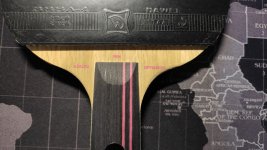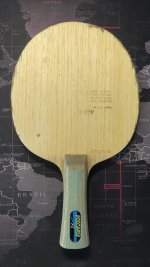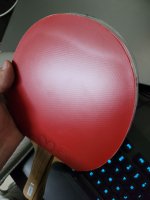This user has no status.
This user has no status.
Member
Hello!
I got a new Blade (Harimoto IF alc in cs) and I have´nt glued rubbers on it, because I have to sand down the wings of it.
So my question is how can i sand it down so its comfortable and can it destroy the Carbon layer on the whole Blade if I sand it down at the wings?
I got a new Blade (Harimoto IF alc in cs) and I have´nt glued rubbers on it, because I have to sand down the wings of it.
So my question is how can i sand it down so its comfortable and can it destroy the Carbon layer on the whole Blade if I sand it down at the wings?












